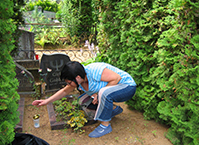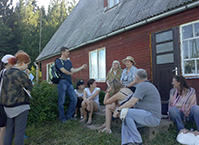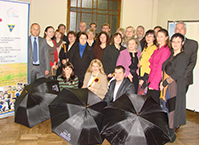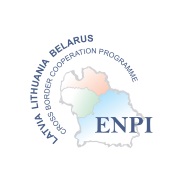Products in Latgale
Categories: Eriks Zachs
In former times and, maybe, also nowadays, in Latgale people most often… buy a lot in shops, but they also grow a lot themselves. They cook themselves, too; therefore they have such self-grown food stuffs. Could you tell me about it? What are your memories and what information about this question you could provide?
Nowadays, the same as in Soviet times, rural people grow most of their foodstuffs in their gardens. In some way, it might be called subsistence farming – for oneself. People usually grow potatoes, carrots, beets, cucumbers, squashes, pumpkins, onions, garlic, beans, broad beans.
I grow vegetables for myself, too. In that soil, where I grow everything, the best yield is that of beans. I grow beans of various sorts – both dwarf beans and runner beans. The sort is Fasiolus vulgaris. Various sorts – mainly butter beans that are consumed with bean pods. For the longest runner beans, I put poles, I don’t spare the length – 3-4 metres long poles. I get rich yield of beans. I collect beans after ripening, I uproot dwarf beans and tie them into bundles, dry them and then I shell them. In runner beans, after ripening, I tear off bean pods, also dry and shell them and then I place them into jars. It is very important that beans do not contain any pests. I don’t use any chemical products, therefore I put collected and desiccated beans in closed vessels – glass jars with lids. And when it is frosty, so that there are no pests, I keep them in cold, below zero temperature, when it is colder – minus 10, minus 15 degrees Celsius. And then no pests, which could spoil the next yield, can survive.
I use those beans both for food and I leave them for the next spring to use them as seeds. I sow them when the air temperature is approximately 15 or more degrees Celsius. They should be watered in the beginning, but later they are aridity resistant. To plant runner beans, I think, is generally more gainful, if compared to dwarf beans, because runner beans grow upwards and bean pods are higher in the air and thus they don’t get the humidity of soil, they do not get ill so often, and their yield is better than that of dwarf beans. The only thing is that runner beans ripen earlier and, if a summer is colder and shorter, then they do not ripen well enough. But it is usually enough to keep them for seeds, anyway. That would be all about the garden. I grow also swedes and turnips, the more various vegetables there are, the more varied the menu is.
But what about cabbages… Usually in Latgale for centuries… About cabbages. Do you grow cabbages?
Yes, of course, I grow cabbages, too. I almost forgot about that. It’s a usual thing. I sow both early and late varieties of cabbage. The early sorts of cabbage are brought in earlier, before cabbage-heads get cracked and they are used to cook various soups, salads.
The late varieties are usually used for sauerkraut. Cabbage heads are grated using a big grater, if it can be called so, then carrots are added and then all that is put into big containers with salt and pounded. It means – you take some wooden pounder and pound the grated cabbage until juice appears. And if the cabbage is completely covered with the juice, then you place some round board that fits into the form of that container, put on some weight and keep it in some warm place for a while. When bubbles start appearing, it is the process of lactic fermentation. Then that sauerkraut is placed in some cooler place and can be used throughout the whole winter – until spring. Sauerkraut might freeze, if placed in some colder place, but in no way does it lose its taste and nutritional properties.
Images
Video
Researcher: Dr. philol. Valentīns Lukaševičs, Daugavpils Universitāte











